Airport Extreme (5th Gen) and Time Capsule (4th Gen) Review - Faster WiFi
by Brian Klug on August 5, 2011 10:22 PM EST- Posted in
- Mac
- Airport Extreme
- Time Capsule
- WiFi
Construction overall is like the Airport Extreme, however, heat up the back to soften the adhesive, pry off, remove some screws, and then the top metal lid lifts off gently. There’s a fan attached to the lid which is plugged into the mainboard, however. That requires some care to unplug gently to avoid damage.
Unlike the Airport Extreme, the Time Capsule has an internal power supply, and, of course, a 3.5” HDD for Time Machine backups. With the lid off, you can already see that the mainboard has a short SATA cable, and the power supply has a SATA power connector in addition to another for the mainboard. The power supply easily lifts out, revealing the board underneath.
I suspect that some users are interested in doing things like buying a 2TB Time Capsule ($299) and bringing along their own 3TB drive instead of paying $499 for the 3TB version. I can’t speak for the 3TB Time Capsule version, but inside the 2TB Time Capsule is a relatively consumer level WD Green WD20EARS SATA II 2TB, 64MB of cache HDD.
It’s lipped with rubber and rests inside a metal caddy on three pieces of foam. On the PCB side the four mounting holes are home to some screws which mate up with a rubber support on the Time Capsule’s base. If you’re looking carefully, you’ll note one more foam piece with a cable leading off—there’s a thermistor attached to the drive using some foam and a plastic bracket.
The temperature sensor is used in conjunction with the SoC to control the Time Capsule’s fan. I played around with the drive and a heat gun (not the two together) alongside a contact-less IR thermometer, and found that the fan seems to turn on and spin at a moderate level at just above 120 F (49 C) and stays active during normal use when the sensor is around 115 F (45 C). At below 110 F (43 C), the fan turns off. At around 140 F (60 C) the fan will spin at maximum and the front LED light will flash amber, and note overheating is happening in the Airport utility. 60 C is the maximum recommended operating temperature for the WD20EARS, so this makes sense.
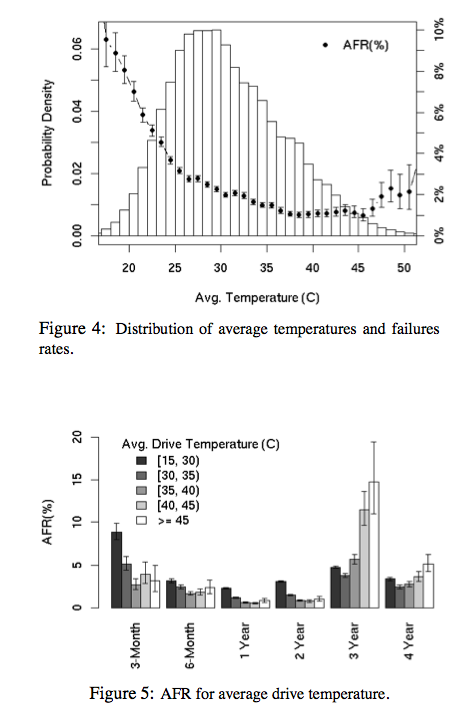
Google’s empirical study of disk failures has shown that between 40 and 45 C is ideal for prolonging drive life, so as long as things run in the fashion that I saw them run, it seems like drives shouldn’t fail due to excessive heat. That said, the airflow pattern in the Time Capsule seems odd—air is drawn in from the side, over and through the power supply, into the fan, then blown over half the drive, and hopefully exhausts through some small vents at the other side. Even with the fan spinning at maximum, it’s hard to really tell that any air is moving, and the only time you can even hear the fan is with it at maximum. The Time Capsule has a strong reputation for running warm, and I can definitely see why.
Upgrading the drive is simple enough. Transfer the four screws, rubber, foam, and the temperature sensor, and connect the SATA data and power cables. There’s also no need to preformat, as the airport utility has an auto formatting option as we’ll show later.
Disassembling the Time Capsule further shows some more interesting, if slightly expected details. On the reverse (top) side of the main PCB is the same Marvell SoC, switch, and flash module.
What’s different is that the Time Capsule gets double the RAM of the Airport Extreme—256MB of DDR2 instead of 128MB. Once again, we see the same dual BCM4331 based PCIe x1 WLAN card and four antenna connectors.
So there you have it, the main difference in both of Apple’s main WiFi AP products is the WLAN stack, which is a modern, more powerful BCM4331 based 3x3:3 solution. So, how has performance changed then?



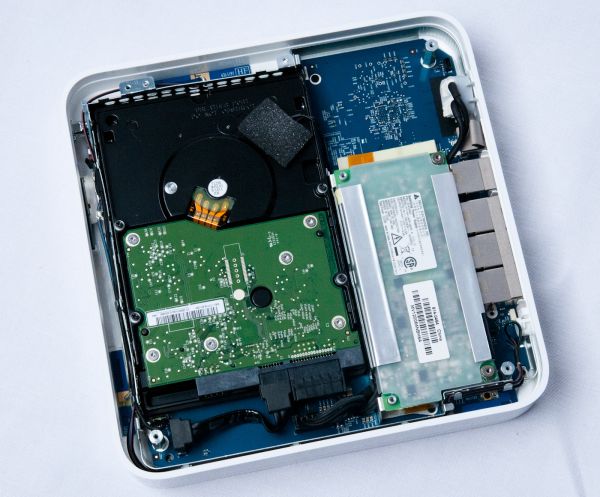
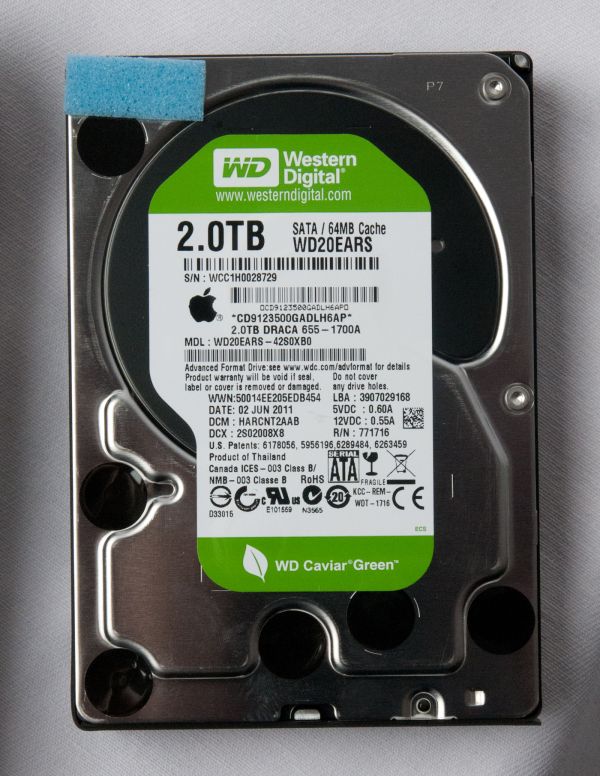
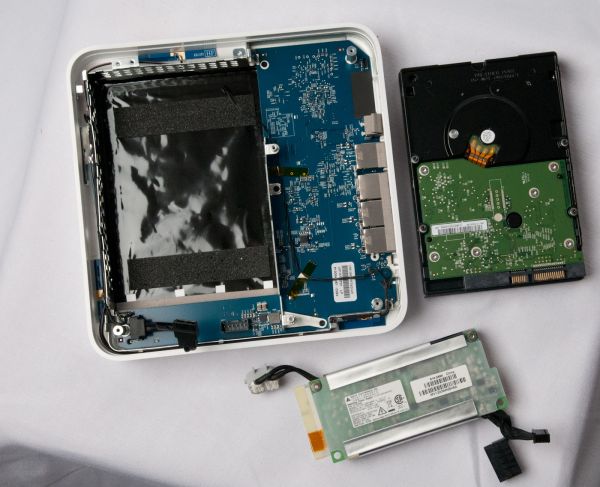

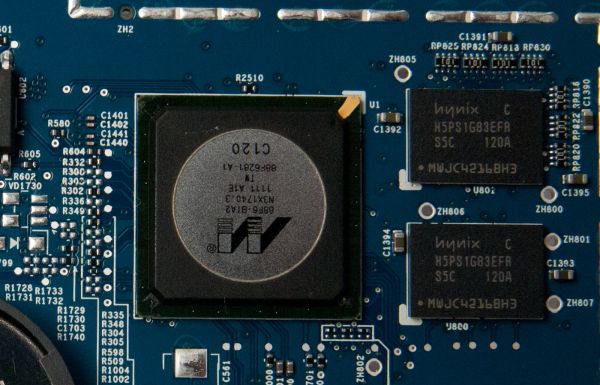














90 Comments
View All Comments
MobiusStrip - Wednesday, August 17, 2011 - link
It would be nice to see a comparison of Airport with other brands of wireless routers.Flachr - Friday, August 19, 2011 - link
I noticed that the 5g Extreme's country field in the airport utiliy is limited to very few countries while all my previous TC's had a long list of countries to choose from.Is Apple now tailoring devices to regions? Is there a way to get the longer list of countries back to select from?
IdBuRnS - Monday, August 22, 2011 - link
I have been using my Airport Extreme (MD031LL/A) for about a week and a half now and I'm loving it. It replaced an old Netgear G router so it's like night and day between the two when it comes to streaming wirelessly.Since I have FiOS I only use it as an AP (FiOS router is in my wiring closet in my garage which puts it out of range for all my devices) but so far I couldn't be happier.
Jack iCaseReview - Friday, August 26, 2011 - link
I don't think the AirportExtreme will ever be a good solution for massive network backups. For small backups it great, but anything too big, and it somewhat slow....Jack
editor - www.iCaseReview.com
MarsMSJ - Sunday, September 4, 2011 - link
I had bought an E4200 to replace a WRT310N that started acting up (going unresponsive.) I had issues where I would get abysmal download speeds on wired. I moved my cable modem to as few splits as possible and that resolved most of the issue (though I argue that my speeds were fast for a year until 2-3 weeks ago and the split had nothing to do with it. Now I get 8-12 where as I had 12-15 for though it's better then the .5 I was getting.)Anyway I noticed right away that when connecting the E4200 my speeds are cut by a 1/2 in comparison to connecting directly to the modem. I upgraded to the latest firmware which not only did not fixed the issue, but broke other features of this router (media server does not work among other things.) Cisco is testing new firmware that won't be available until the end of September if everything goes well.
I found this out because I got an the new Airport Extreme Gen 5 for my side of the house recently. I got curious and switched out the new AE and saw that my speeds were as fast as connected directly to the modem. I spent my Saturday night testing these both by themselves and my notebook and confirmed the E4200 is cutting internet speeds in half. When I hooked everything up the speeds were similar to when I was the only device connected to it.
Right now I have the AE Gen 5 connected to the modem on the other side of the house while the old WRT310 is on my side with my devices wired in (no wireless on my side for the moment.) Wired into the WRT310 which is wired to the AE Gen 5 (we have a 100 foot cable that runs outside along the roof) and using speedtest.net (used them and the same server for all testing) I get 7-9 Mbps compared to the 2-4 on the E4200.
Something is definitely wrong and luckily I got the E4200 at Best Buy on sale (130USD though it's back up to 180) and they have a 45 day return policy for Reward Zone Silver members (Dad bought a mac book pro from them thus spent enough to qualify.) I will be returning it and maybe getting another AE Gen 5 or just waiting it out to see if the new firmware fixes the E4200 download/upload speed issue. (I can live without wireless in my room for month.) If you're debating, now is not the time to buy an E4200.
milan03 - Saturday, September 17, 2011 - link
You can totally share a printer using Airport Express. I've been doing it since the 4th Gen.tekenaar - Monday, October 24, 2011 - link
. . . is: "At this point it isn’t really looking like there’s much different, but exterior appearances can be deceptive.". . . S/B: "At this point it isn’t really looking like there’s much difference, but exterior appearances can be deceptive." ?!
silvalli - Monday, October 24, 2011 - link
Can't find discussion of this anywhere.spaztec - Friday, December 23, 2011 - link
Noticing a fizzing sound coming from my unit during wireless data transfer - any techs here with insight as to which exact component is causing it? I'd check myself, but voiding the warranty for curiosity's sake sounds like a bad idea.